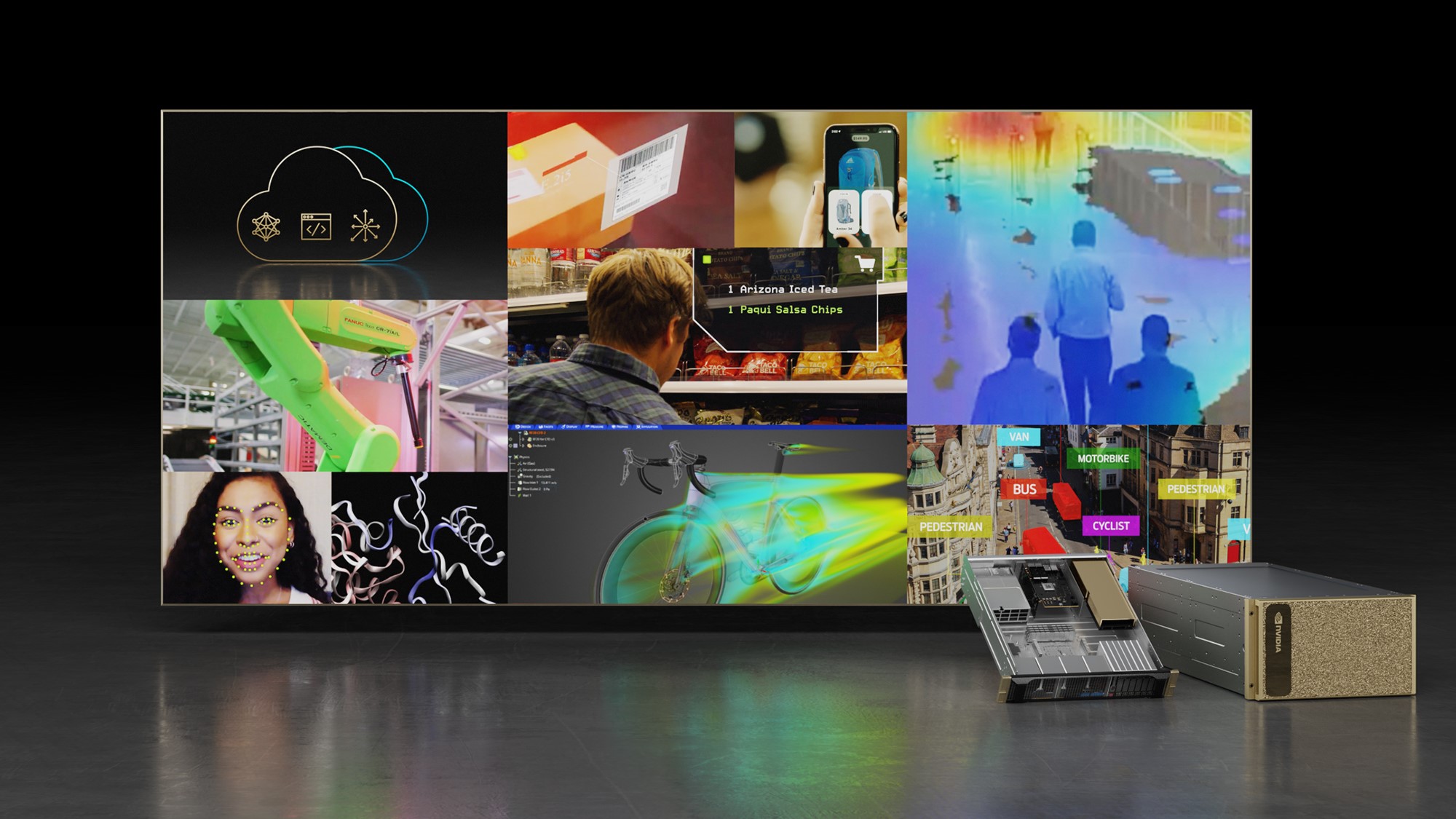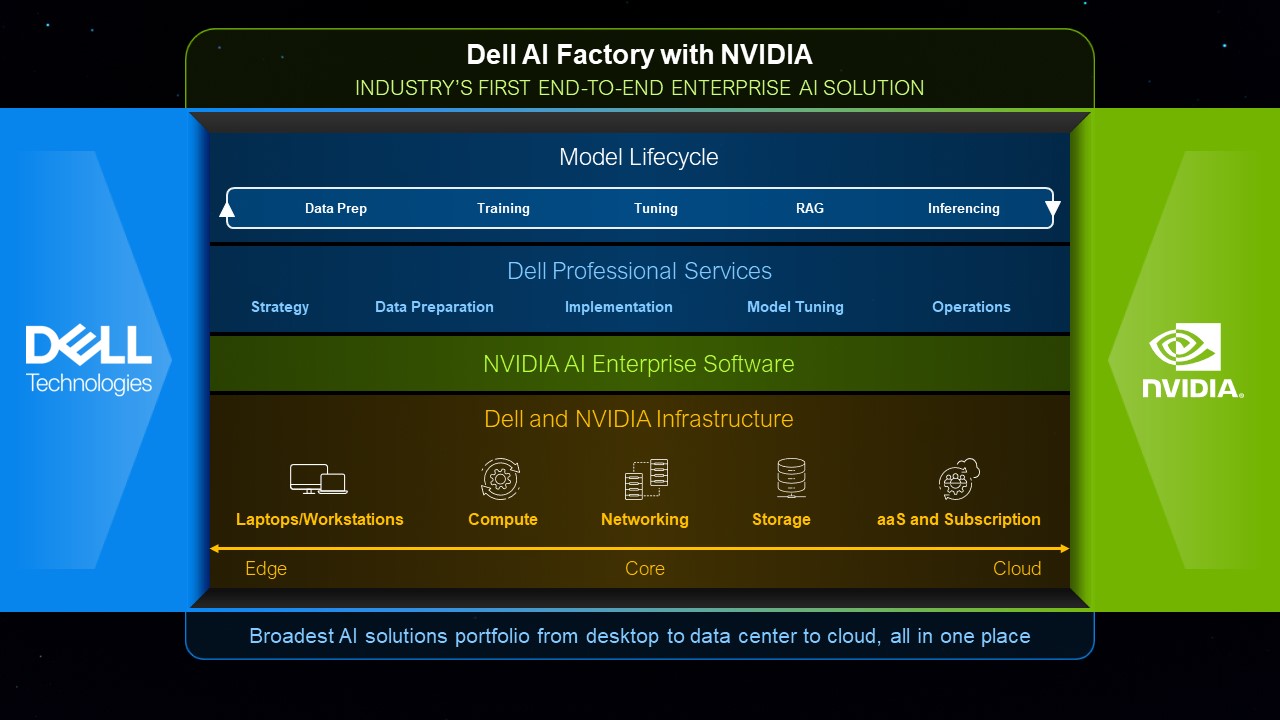
Introduction
With great pleasure, we will explore the intriguing topic related to Nvidia: The AI and Gaming Solution for Every Need. Let’s weave interesting information and offer fresh perspectives to the readers.
Table of Content
- 1 Introduction
- 2 The Nvidia Empire: More Than Just Graphics Cards
- 3 Gaming: The Foundation of Nvidia’s Success
- 3.1 The GeForce RTX Series: A Quantum Leap in Gaming Graphics
- 3.2 Beyond the Graphics Card: Nvidia’s Ecosystem
- 3.2.1 GeForce Experience: Optimizing Your Gaming Setup
- 3.2.2 Nvidia Broadcast: Elevating Your Streaming Game
- 4 AI: Nvidia’s Drive into the Future
- 4.3 The Rise of CUDA and Parallel Computing
- 4.4 Nvidia’s AI Platforms: Powering the Next Generation of AI
- 4.4.3 NVIDIA DGX Systems: Supercomputers for AI Research
- 4.4.4 NVIDIA Jetson: AI at the Edge
- 4.5 Real-World Applications of Nvidia AI
- 4.5.5 Healthcare: Revolutionizing Medical Imaging
- 4.5.6 Autonomous Vehicles: Driving the Future of Transportation
- 4.5.7 Robotics: Empowering Intelligent Machines
- 5 Addressing Concerns and Counterarguments
- 5.6 The Environmental Impact of GPU Manufacturing
- 5.7 The Ethical Implications of AI
- 5.8 The Cost of Nvidia’s High-End Products
- 6 The Future of Nvidia: A Vision of Innovation
- 7 Frequently Asked Questions
- 8 Closure
Nvidia: The AI and Gaming Solution for Every Need
The Nvidia Empire: More Than Just Graphics Cards
Let’s be honest, for many, Nvidia is synonymous with gaming. Those iconic green boxes, promising unparalleled graphical fidelity and smooth frame rates, have become legendary in the world of PC gaming. But the reality is far more expansive than that. Nvidia isn’t just a purveyor of high-end graphics cards; it’s a powerhouse in the rapidly evolving landscape of artificial intelligence (AI), quietly revolutionizing industries and shaping our technological future. Think about it: from the stunning visuals in your favorite AAA title to the sophisticated algorithms powering self-driving cars, Nvidia’s influence is pervasive. This article delves into the multifaceted world of Nvidia, exploring its dominance in both the gaming and AI sectors, and how its technologies are impacting our lives in profound ways. We’ll examine the company’s innovative products, their real-world applications, and the future implications of its technological advancements. We’ll also address some common concerns and misconceptions surrounding Nvidia’s products and their impact on society. Get ready for a deep dive into the heart of a technological giant.
Gaming: The Foundation of Nvidia’s Success
The GeForce RTX Series: A Quantum Leap in Gaming Graphics
Nvidia’s GeForce RTX series represents a monumental leap forward in gaming technology. The introduction of ray tracing, a technique that simulates the realistic behavior of light, transformed the gaming experience, offering unprecedented levels of visual realism. Remember those clunky, pixelated games from the past? The RTX series has brought us light years beyond that, delivering breathtakingly realistic environments and immersive gameplay. But it’s not just about pretty pictures; the RTX series also boasts DLSS (Deep Learning Super Sampling), a technology that uses AI to upscale lower-resolution images to higher resolutions without sacrificing performance. This means smoother gameplay at higher resolutions, a game-changer for gamers who demand both visual fidelity and high frame rates. I remember upgrading from my old card to an RTX 3080; the difference was night and day, transforming my gaming experience from enjoyable to truly immersive. The level of detail, the realistic lighting, it was a revelation. It’s not just about the graphics though; it’s about the overall gaming experience, making every moment feel more real, more engaging. Think of the difference between reading a book and watching a movie adaptation – the RTX cards add that cinematic depth and immersion.
Beyond the Graphics Card: Nvidia’s Ecosystem
GeForce Experience: Optimizing Your Gaming Setup
Nvidia doesn’t just sell hardware; it builds an ecosystem. GeForce Experience, a companion software application, allows gamers to optimize their game settings for optimal performance, capture and share gameplay footage, and even stream their games to other devices. It’s a seamless integration of hardware and software, designed to enhance the overall gaming experience. It’s like having a personal gaming assistant, constantly optimizing your settings in the background to ensure you’re getting the best possible performance. It’s a small detail, but it speaks volumes about Nvidia’s commitment to providing a holistic gaming experience. Imagine trying to manually adjust all the settings for each game; it’s a time-consuming process, and GeForce Experience takes that burden off your shoulders. This simple, user-friendly interface makes the whole experience much more enjoyable. It’s a perfect example of how Nvidia goes beyond just providing the hardware; they provide the complete package.
Nvidia Broadcast: Elevating Your Streaming Game
The rise of streaming has created a whole new level of engagement for gamers, and Nvidia Broadcast is designed to enhance this experience. This software utilizes AI to improve audio and video quality during live streams, removing background noise, enhancing voice clarity, and even adding virtual backgrounds. Think of it as a professional-grade studio setup, accessible to anyone with an Nvidia graphics card. It’s a game-changer for aspiring streamers, allowing them to create high-quality content without requiring expensive equipment or technical expertise. Before Nvidia Broadcast, I struggled with background noise during my streams. Now, it’s a thing of the past. The AI-powered noise cancellation is incredible, making my streams sound far more professional. It’s a testament to how Nvidia uses AI to enhance the gaming experience beyond just the visual aspects.
AI: Nvidia’s Drive into the Future
The Rise of CUDA and Parallel Computing
Nvidia’s success in AI isn’t accidental. It’s built on the foundation of CUDA (Compute Unified Device Architecture), a parallel computing platform and programming model that allows developers to harness the power of Nvidia GPUs for general-purpose computing tasks. This means that the same powerful processors that render stunning graphics in games can also be used to train complex AI models, process massive datasets, and accelerate scientific simulations. It’s a testament to Nvidia’s foresight and engineering prowess, recognizing the potential of GPUs beyond the gaming realm. This isn’t just about gaming anymore; it’s about unlocking the potential of AI in fields like healthcare, finance, and scientific research. It’s a technological leap that has far-reaching implications across various industries.
Nvidia’s AI Platforms: Powering the Next Generation of AI
NVIDIA DGX Systems: Supercomputers for AI Research

For serious AI research and development, Nvidia offers DGX systems, high-performance computing platforms designed to accelerate the training and deployment of complex AI models. These systems are essentially supercomputers, packing incredible computational power into a relatively small footprint. They are used by researchers and developers across the globe to push the boundaries of AI research, driving innovation in fields ranging from medicine to autonomous vehicles. Imagine trying to train a large language model on a regular computer; it would take an incredibly long time, if it were even possible. DGX systems provide the necessary computational power to make these tasks feasible, accelerating the pace of AI research and development.
NVIDIA Jetson: AI at the Edge
Not all AI applications require the computational power of a DGX system. For edge computing applications, where AI processing needs to occur close to the data source, Nvidia offers the Jetson platform. These compact, energy-efficient devices are ideal for applications like robotics, drones, and smart cameras. They bring the power of AI to devices that are not connected to a large data center, enabling real-time processing and decision-making. Think of self-driving cars; they need to process information in real-time, and the Jetson platform allows them to do so without relying on a constant connection to a central server. It’s a critical component in enabling the next generation of autonomous systems.
Real-World Applications of Nvidia AI
Healthcare: Revolutionizing Medical Imaging
Nvidia’s AI technologies are transforming healthcare, particularly in the field of medical imaging. AI-powered algorithms can analyze medical images, such as X-rays and MRIs, to detect diseases like cancer at earlier stages, improving patient outcomes. This is a powerful example of how Nvidia’s technology is making a tangible difference in people’s lives. It’s not just about faster diagnosis; it’s about saving lives. The accuracy and speed of these AI-powered diagnostic tools are revolutionizing the healthcare industry, allowing doctors to make more informed decisions and provide better care for their patients. It’s a truly inspiring application of Nvidia’s technology.
Autonomous Vehicles: Driving the Future of Transportation
The development of self-driving cars is heavily reliant on AI, and Nvidia is at the forefront of this revolution. Its DRIVE platform provides the computational power and software tools necessary to develop and deploy autonomous vehicle systems. These systems use AI to process sensor data, make driving decisions, and navigate complex environments. It’s a complex challenge, but Nvidia’s technology is playing a crucial role in making autonomous vehicles a reality. Imagine a future with fewer traffic accidents, reduced congestion, and increased accessibility for everyone. Nvidia’s contribution to autonomous vehicle technology is paving the way for this safer and more efficient future of transportation.
Robotics: Empowering Intelligent Machines
Nvidia’s AI technologies are also empowering the development of intelligent robots. These robots use AI to perceive their environment, make decisions, and interact with humans. This has applications in various industries, from manufacturing and logistics to healthcare and customer service. Think of robots performing complex surgeries, assisting the elderly, or automating repetitive tasks in factories. Nvidia’s technology is enabling the creation of robots that are more capable, more efficient, and more adaptable than ever before. It’s a significant step towards a future where robots are seamlessly integrated into our daily lives.
Addressing Concerns and Counterarguments
The Environmental Impact of GPU Manufacturing

The manufacturing of GPUs, like any electronic device, has an environmental impact. The production process consumes energy and resources, and the disposal of old GPUs can contribute to electronic waste. Nvidia, like other tech companies, is aware of these concerns and is actively working to reduce its environmental footprint. This includes initiatives to improve the efficiency of its manufacturing processes, use more sustainable materials, and promote responsible recycling programs. It’s a complex issue, and there’s always room for improvement, but Nvidia is demonstrating a commitment to environmental sustainability.
The Ethical Implications of AI
The rapid advancement of AI raises ethical concerns, such as bias in algorithms, job displacement, and the potential misuse of AI technologies. Nvidia, as a leader in the AI field, acknowledges these concerns and is committed to developing and deploying AI responsibly. This includes working with researchers and policymakers to address the ethical challenges of AI and ensuring that its technologies are used for good. It’s a shared responsibility, and Nvidia is playing its part in promoting the ethical development and use of AI. This requires ongoing dialogue and collaboration between technologists, policymakers, and the wider community.
The Cost of Nvidia’s High-End Products
Nvidia’s high-end products, particularly its top-of-the-line GPUs, can be expensive. This can be a barrier to entry for some consumers, particularly those with limited budgets. However, Nvidia offers a range of products at different price points, catering to various needs and budgets. While the top-end products are geared towards professionals and enthusiasts, there are more affordable options available for casual gamers and other users. It’s important to consider your specific needs and budget when choosing an Nvidia product.
The Future of Nvidia: A Vision of Innovation
Nvidia’s future looks bright. The company is well-positioned to continue its leadership in both the gaming and AI sectors. Its ongoing investment in research and development, coupled with its strong partnerships with other industry leaders, suggests a future filled with groundbreaking innovations. We can expect to see even more realistic gaming experiences, more powerful AI tools, and a wider range of applications for Nvidia’s technologies across various industries. It’s an exciting time to be following Nvidia’s progress, as the company continues to shape the future of technology.
Nvidia’s journey, from a gaming graphics card company to a global leader in AI, is a testament to its innovation and foresight. Its commitment to pushing the boundaries of technology, coupled with its focus on responsible development, positions it for continued success in the years to come. The future of computing, gaming, and AI is inextricably linked to Nvidia’s ongoing innovations, and it will be fascinating to witness the next chapter in its remarkable story.
Frequently Asked Questions
- What is CUDA? CUDA is Nvidia’s parallel computing platform and programming model that allows developers to harness the power of Nvidia GPUs for general-purpose computing tasks, including AI.
- What is the difference between GeForce and Quadro GPUs? GeForce GPUs are designed for gaming and consumer applications, while Quadro GPUs are designed for professional workstations and demanding applications like CAD and video editing.
- How does DLSS work? DLSS (Deep Learning Super Sampling) uses AI to upscale lower-resolution images to higher resolutions, resulting in smoother gameplay at higher resolutions without sacrificing performance.
- What are Nvidia’s AI platforms? Nvidia offers various AI platforms, including DGX systems for high-performance computing, Jetson for edge computing, and DRIVE for autonomous vehicles.
- What is the environmental impact of Nvidia’s products? Nvidia is aware of the environmental impact of its products and is actively working to reduce its footprint through initiatives like improving manufacturing efficiency and promoting responsible recycling.
Closure
In conclusion, we hope this article has provided valuable insights into Nvidia: The AI and Gaming Solution for Every Need. We thank you for taking the time to read this article. See you in our next article!